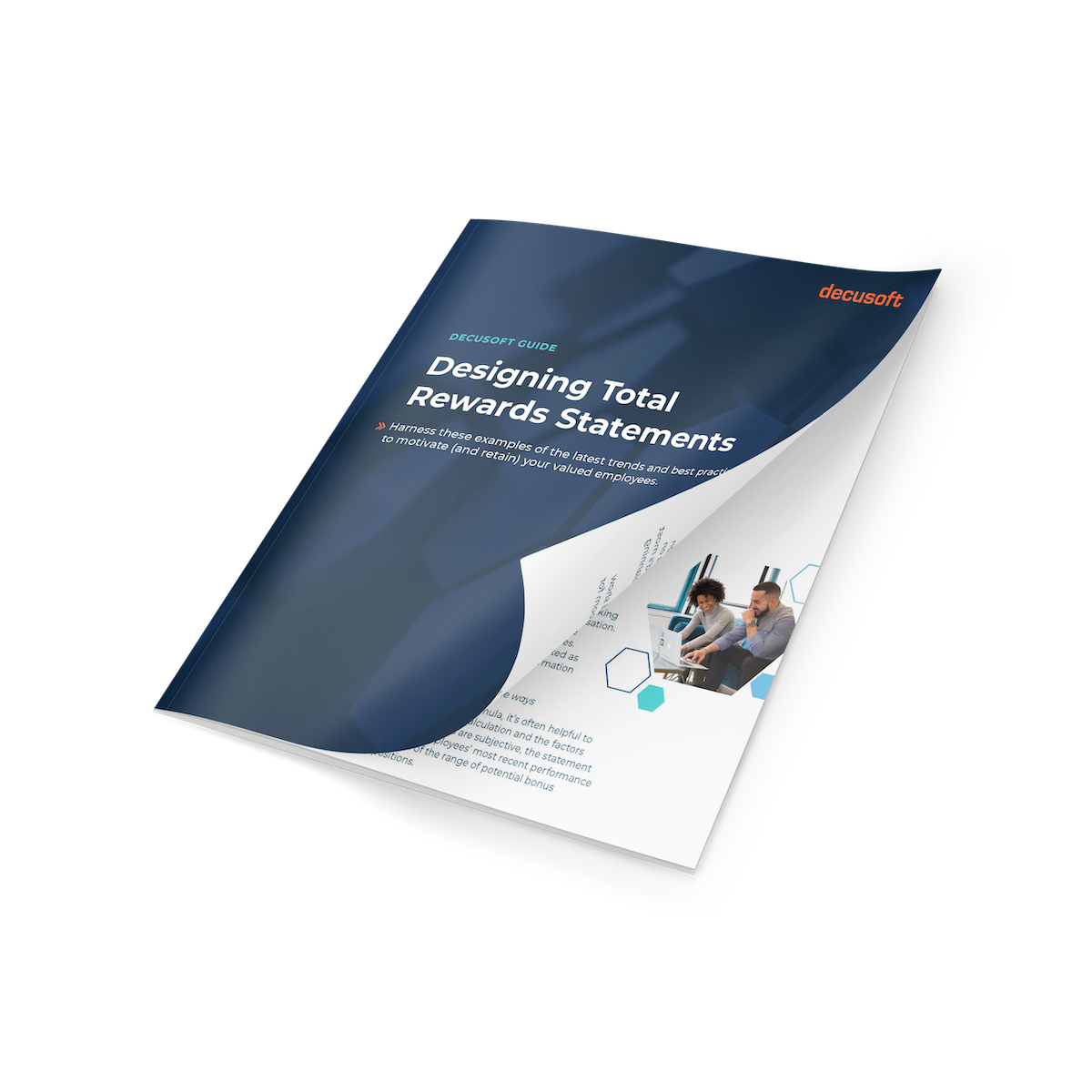How to keep total rewards statements from bogging down compensation
Total rewards statements are essential to compensation planning in all industries. And in 2023, creating them should not be complex.
Compensation cycles are to HR professionals what tax season is to accountants: calendrical intervals of unavoidable complexity and probable headache. Even if you’re lucky enough to avoid common challenges—from inaccurate information to dissatisfied employees—myriad agenda items await: budgets, incentive programs, performance reviews, equity objectives, total rewards statements, etc.
That latter item is especially meaningful: Companies use total rewards statements to convey the full value of their comp packages, including salaries, bonuses, health benefits, retirement options, and equity. Done well, total rewards statements help employees feel their efforts are amply rewarded.
Total rewards statements: A painstaking process
Traditional total rewards statements are created in a multistep process. Information is gathered from several systems—say, a 401(k) system from Fidelity, a transit-reimbursement tracker, bonus management software, and others—and downloaded into spreadsheets. The actual statement template needs to be created with reference merges to all the data, followed by a merge function to aggregate the data and produce a polished document. Then the process needs to be completed for each employee - separately, or in a batch, with both ways requiring verification that the data is processed correctly.
Imperfect methods, imperfect results
Methods for producing total rewards statements are flawed—as are the results they deliver. Consider:
- Production is time-consuming and laborious. HR staff spend precious time collecting, systematizing, and merging data from multiple sources. And they must rinse and repeat for every employee on payroll.
- Results are error-prone. By moving information between systems and spreadsheets, you risk introducing errors. Time is then spent researching them—if you’re alert enough to catch them, that is. And with multiple people working on the same sheets, data is easily corrupted or overwritten.
- Personalization is challenging. Since variables such as compensation plan types, union status, geographic locations, and departments must be accounted for, total rewards statements need to be customized for each employee. Doing so with merge functionality can be less than efficient.
It can be tempting to chuck the entire total rewards statements endeavor. How crucial is it, you may wonder? Answer: very. (Sorry.) If you don’t issue total rewards statements or send incomplete ones, employees may feel undercompensated and jump ship—certainly undesirable amid today’s labor shortages.
Download the guide to read 7 key methods to share a “Total Rewards Statement” in a high-impact way that retains your employees.

An elegant total rewards solution
Increasingly, HR departments are sidelining manual processes that have long dominated compensation cycles. Instead, they’re turning to holistic compensation planning and management software that allows for painless planning and seamless integrations.
Total rewards statements can likewise be made effortless as well as dynamic: Leading software options such as purpose-built compensation planning & management solutions integrate information from all relevant systems, producing attractive total rewards statements—personalized for each employee—in a flash. And since human involvement is limited to a final review, the statements are more accurate, more secure, and more efficiently produced than their predecessors.
Download the guide today to learn:
How to share comp in a more meaningful way
How to tell a story about why you value your employees
How to show (not tell) why you value your team.
And other strategic methods for avoiding turnover for miscommunications.